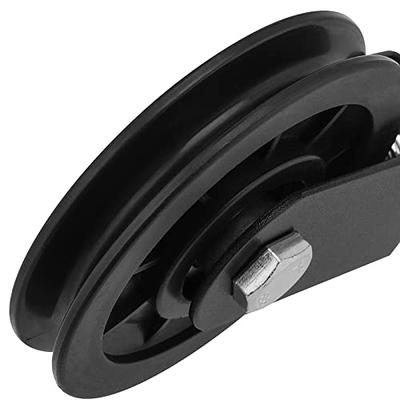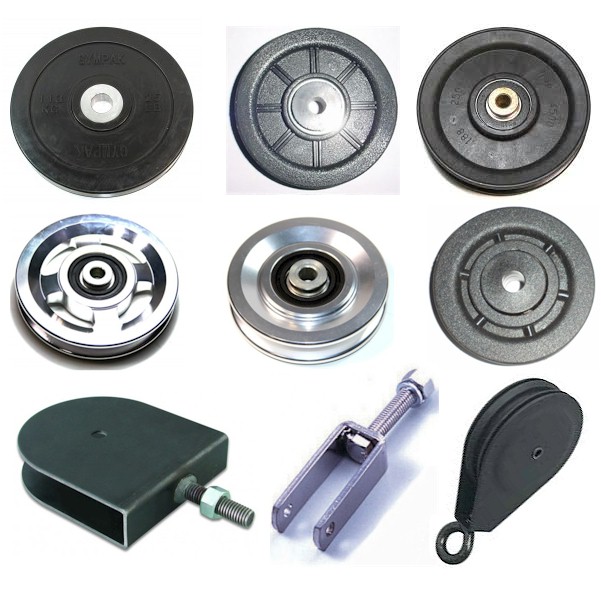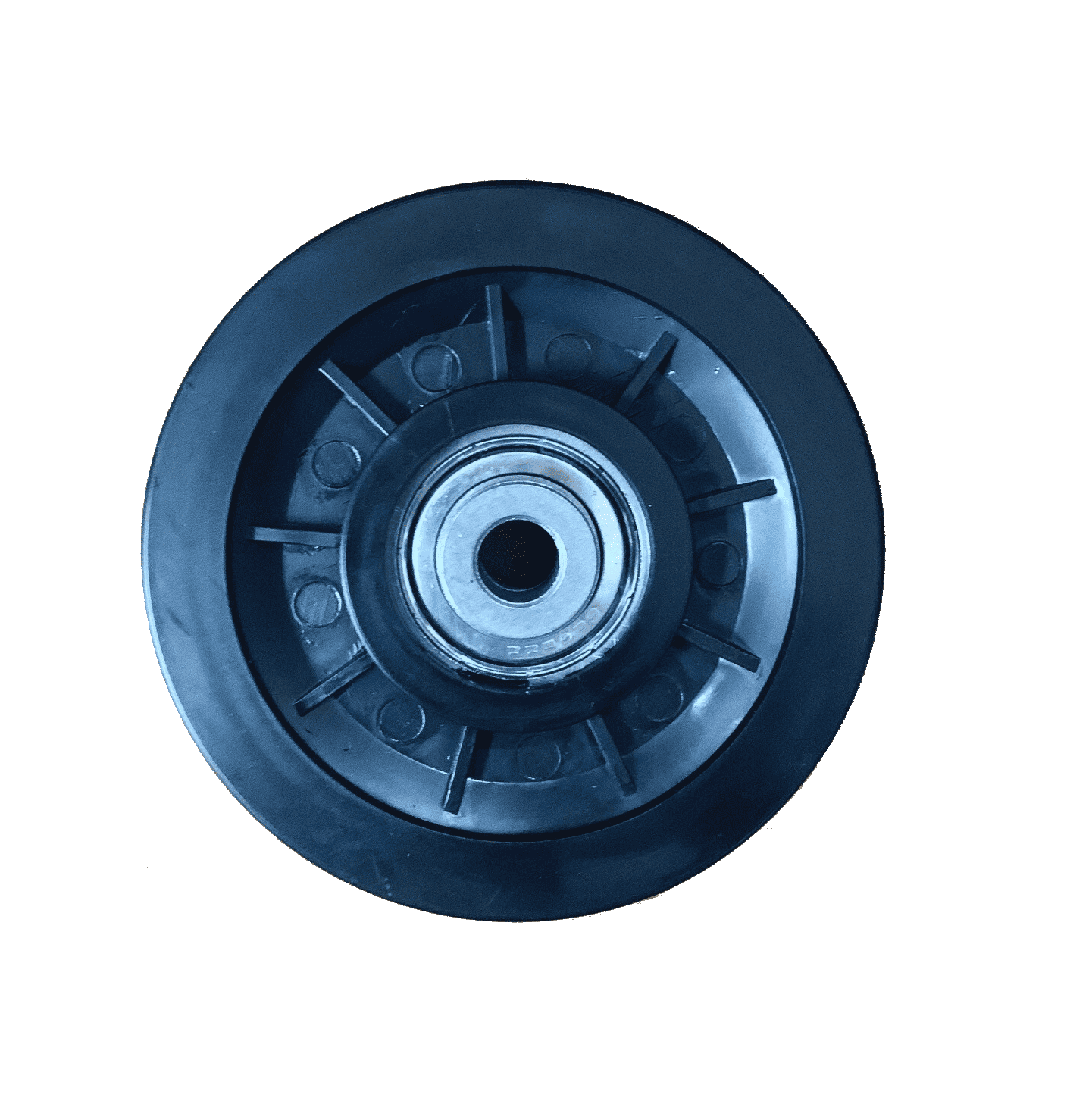Product Description
PRODUCT OVERVIEW:
1) Multi functional equipment providing a variety of different exercises.
2) Height adjustable in increments from the floor to the top of the machine.
3) Rotating pulley wheel for resistance in different directions.
RANGE OVERVIEW:
1) The NEXT GENERATION Of Strength Machine Protraining Equipment PT800 Series is our flagship Commercial Strength training line.
2) This is an extensive series offering 60 heavy duty models, catering for all strength training exercises.
3) User friendly design, advanced biomechanics, clean lines, unprecedented functionality and smooth, fluid movement.
4) Every piece features a contemporary look and colour scheme, and combines the best features with superior design and reliable performance.
5) This series is the best choice for full Commercial applications where long lasting, reliable, functional strength equipment is a must.
STRENGTH EQUIPMENT LIMITED WARRANTY:
1) Structural Steel Framework Life time
2) Rotary Bearings, Weight Stacks, Pulleys, Xihu (West Lake) Dis. Rods, Structural Moving Parts 2 years
3) Cable, Linear Bearings, Springs Upholstery, Handgrips 1 year
4) Items Not Listed 6 month
PT-800
PT-800
/* January 22, 2571 19:08:37 */!function(){function s(e,r){var a,o={};try{e&&e.split(“,”).forEach(function(e,t){e&&(a=e.match(/(.*?):(.*)$/))&&1
| Type: | Adjustable Low + High Pulley |
|---|---|
| Exercise Part: | Adjustable Low + High Pulley |
| Application: | Gymnasium |
| Age: | Adult |
| Gender: | Men |
| Certification: | CE, ISO, RoHS |
| Samples: |
US$ 699/Piece
1 Piece(Min.Order) | |
|---|
| Customization: |
Available
| Customized Request |
|---|

What maintenance practices should be followed to keep gym pulley systems in optimal condition?
To keep gym pulley systems in optimal condition, the following maintenance practices should be followed:
1. Regular Inspection:
Perform regular inspections of the pulley system to identify any signs of wear, damage, or misalignment. Check the cables, pulleys, and attachment points for any fraying, kinks, or corrosion. Ensure that the pulley wheels are rotating smoothly and that the cables are properly seated in their grooves.
2. Cleaning:
Regularly clean the pulley system to remove dirt, dust, and debris that can accumulate over time. Use a mild detergent or gym equipment cleaner to wipe down the cables, pulleys, and attachment points. Avoid using harsh chemicals that may damage the materials or coatings of the pulley system.
3. Lubrication:
Apply a suitable lubricant to the pulley system as recommended by the manufacturer. Lubrication helps reduce friction, ensuring smooth operation and prolonging the lifespan of the cables and pulleys. Follow the manufacturer’s instructions on the type of lubricant to use and the frequency of application.
4. Cable Tension:
Check and adjust the cable tension regularly. Over time, cables may stretch or loosen, affecting the performance and resistance of the pulley system. Consult the equipment manual or seek professional assistance to ensure proper cable tension according to the manufacturer’s guidelines.
5. Weight Stack Alignment:
If the gym pulley system uses a weight stack, ensure that the weight plates are properly aligned and seated on the guide rods. Misaligned weight plates can cause uneven resistance or interfere with the smooth movement of the cables. Make any necessary adjustments to maintain proper weight stack alignment.
6. Replace Worn Components:
Regularly inspect the cables, pulleys, and other components for signs of wear or damage. If any components show significant wear, such as frayed cables, cracked pulleys, or worn attachment points, replace them promptly with compatible parts from the manufacturer. Using worn components can compromise the safety and performance of the pulley system.
7. Calibration:
If applicable, periodically calibrate the pulley system to ensure accurate resistance levels. Follow the manufacturer’s instructions or consult a professional technician to calibrate the pulley system properly. Calibration helps maintain consistency and reliability in the resistance provided by the pulley system.
By following these maintenance practices, gym owners and users can keep the pulley systems in optimal condition, ensuring smooth operation, safety, and longevity of the equipment.

How do gym pulleys contribute to muscle isolation and targeted training?
Gym pulleys are versatile exercise equipment that can contribute to muscle isolation and targeted training in several ways. Here’s how they achieve these goals:
1. Adjustable Resistance:
Gym pulley systems typically allow for adjustable resistance levels. This feature enables users to target specific muscle groups by selecting an appropriate resistance that challenges the target muscles without overloading other muscle groups. By adjusting the resistance, individuals can isolate and focus on specific muscles during their workouts.
2. Independent Arm or Leg Movement:
Many gym pulley systems have separate handles or attachments for each arm or leg. This allows for independent movement, enabling unilateral exercises that target one side of the body at a time. Unilateral exercises can help correct muscle imbalances and develop balanced strength and muscle coordination.
3. Variable Range of Motion:
Gym pulleys provide the flexibility to adjust the range of motion based on individual needs and specific muscle targeting. By modifying the cable attachment points or seat positions, users can customize the range of motion for each exercise. This allows for precise muscle targeting and isolation.
4. Multiple Attachment Options:
Pulley systems offer various attachment options such as bars, ropes, handles, or straps. These attachments can be used to perform a wide range of exercises that target specific muscle groups. For example, different grip variations on the handles or using a rope attachment can engage different muscle fibers and provide unique training stimuli.
5. Exercise Variety:
Gym pulleys provide a multitude of exercise options, allowing users to target different muscle groups from various angles. By adjusting the cable height, seat position, or attachment points, individuals can perform exercises that isolate specific muscles or perform compound movements that engage multiple muscle groups simultaneously. This exercise variety helps create a well-rounded workout routine.
6. Core Activation:
When performing exercises on a pulley system, the core muscles are engaged to stabilize the body during movements. This core activation adds an additional element of targeted training for the abdominal and back muscles. Exercises like cable crunches or woodchops specifically focus on core strength and stability.
7. Progressive Overload:
Gym pulley systems allow for progressive overload, which is essential for muscle growth and strength development. Users can gradually increase the resistance over time, challenging the muscles to adapt and grow stronger. Progressive overload is a key principle in targeted training for muscle development.
8. Isolation of Weak or Lagging Muscles:
Gym pulleys are useful for targeting weak or lagging muscles that may not be adequately engaged during compound exercises. By isolating these muscles with specific pulley exercises, individuals can address muscle imbalances and focus on strengthening the weaker areas of their physique.
By incorporating gym pulleys into a workout routine, individuals can take advantage of the adjustable resistance, independent arm/leg movement, variable range of motion, multiple attachment options, exercise variety, core activation, progressive overload, and isolation of weak muscles. These features contribute to muscle isolation and targeted training, allowing individuals to achieve their specific fitness goals.

What types of materials are typically used in the construction of gym pulleys?
Gym pulleys are constructed using a variety of materials that are chosen for their durability, strength, and smooth operation. Here are some commonly used materials in the construction of gym pulleys:
1. Metal:
Metal, such as steel or aluminum, is frequently used in the construction of gym pulleys. These metals offer excellent strength and durability, making them suitable for handling heavy loads and providing long-lasting performance. Steel is known for its robustness, while aluminum is valued for its lightweight nature.
2. Nylon:
Nylon is a popular material for gym pulley wheels or sheaves. It is chosen for its low friction properties, which allow for smooth and quiet operation. Nylon pulleys are resistant to wear and can withstand repetitive use without compromising performance. They are also lightweight and cost-effective.
3. UHMW (Ultra-High-Molecular-Weight Polyethylene):
UHMW polyethylene is a high-performance plastic material commonly used in gym pulleys. It has excellent strength, low friction coefficient, and high wear resistance. UHMW pulleys provide smooth rotation, reduce noise, and require minimal maintenance. They are also resistant to chemicals and impact, making them suitable for demanding gym environments.
4. Stainless Steel:
Stainless steel is utilized in gym pulleys for its corrosion resistance and durability. It is commonly used in pulley shafts, brackets, and other components that require high strength and resistance to moisture or sweat. Stainless steel pulleys maintain their performance and appearance over time, even in humid or corrosive environments.
5. Plastic Composites:
Plastic composites, such as reinforced polymers or fiberglass-reinforced plastics, are sometimes used in the construction of gym pulleys. These materials offer a balance between strength, weight, and cost. Plastic composite pulleys can provide durability and smooth operation while being lighter and more affordable compared to all-metal alternatives.
6. Bearings and Bushings:
In addition to the materials mentioned above, gym pulleys incorporate bearings or bushings to facilitate smooth rotation. Bearings, typically made of steel or ceramic, minimize friction and allow the pulleys to rotate freely. Bushings, often made of bronze or other self-lubricating materials, provide low-friction contact points for the rotating components.
It’s important to note that the specific materials used in gym pulleys can vary depending on the manufacturer, design, and intended use of the equipment. Manufacturers may employ a combination of materials to optimize performance, durability, and cost-effectiveness.
In summary, gym pulleys are commonly constructed using materials such as metal (steel or aluminum), nylon, UHMW polyethylene, stainless steel, plastic composites, as well as bearings and bushings. These materials offer a balance of strength, durability, low friction, and corrosion resistance, ensuring smooth operation and longevity of the gym pulley systems.


editor by CX
2024-03-15